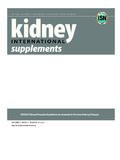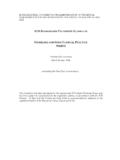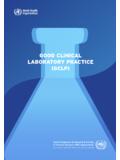Transcription of Pan Pacific Clinical Practice Guideline for the …
1 Pan Pacific Clinical Practice Guideline for the Prevention and Management of Pressure Injury Abridged version WOUND. HEALING. SOCIETY. S I N G A P O R E. Pan Pacific Guideline for the Prevention and Management of Pressure Injury (Abridged Version) (2012). Published by the Australian Wound Management Association in collaboration with the New Zealand Wound Care Society, Hong Kong Enterostomal Therapists Association and Wound Healing Society of Singapore. Copyright the Australian Wound Management Association Inc. 2012. All rights reserved. Apart from any fair dealing for the purposes of private study, research or review, as permitted under the Copyright Act, no part may be reproduced or copied in any form or by any means without the written permission of the Australian Wound Management Association.
2 For permission to reproduce information refer to: Australian Wound Management Association New Zealand Wound Care Society website Hong Kong Enterostomal Therapists Association Wound Healing Society Singapore Suggested citation: Australian Wound Management Association. Pan Pacific Clinical Practice Guideline for the Prevention and Management of Pressure Injury. Abridged Version, AWMA; March 2012. Published by Cambridge Publishing, Osborne Park, WA. ISBN Print: 978-0-9807842-9-9. ISBN Online: 978-0-9807842-8-2. Contact: The Australian Wound Management Association at Disclaimer: This Guideline was developed by the Australian Wound Management Association in collaboration with the New Zealand Wound Care Society, Hong Kong Enterostomal Therapists Association and Wound Healing Society of Singapore.
3 The Guideline presents a comprehensive review of the assessment, diagnosis, management and prevention of pressure injuries within the Australian, New Zealand, Hong Kong and Singapore healthcare context, based on the best evidence available up to August 2011. The Guideline is designed to provide information to assist in decision-making and is based on the best information available at the date of compilation. This document is a general guide to appropriate Practice , to be implemented by a qualified health professional subject to his or her Clinical judgment of each individual case and in consideration of the patient's personal preferences.
4 The Guideline should be implemented in a culturally safe and respectful manner in accordance with the principles of protection, participation and partnership. Copies of this Guideline can be downloaded from the following websites: Australian Wound Management Association: New Zealand Wound Care Society: Hong Kong Enterostomal Therapists Association: Wound Healing Society Singapore Pan Pacific Clinical Practice Guideline for the Prevention and Management of Pressure Injury Table of contents page 1. INTRODUCTION 3. Acknowledgements 3. Guideline Development Steering Committee 3.
5 Guideline Development Groups 4. Literature reviewers 4. Commonly used abbreviations 5. Glossary 6. Quick reference flow chart 11. 2. SUMMARY OF RECOMMENDATIONS 12. 3. BACKGROUND 15. Aim of the Guideline 15. Scope and target population 15. Focus of the Guideline 15. Clinical questions 15. 4. Guideline DEVELOPMENT PROCESS 16. 5. PRESSURE INJURY RISK ASSESSMENT 17. Factors associated with an increased risk of pressure injury 17. Identifying patients at risk of pressure injury 17. Risk assessment scales 18. Skin assessment 19. Nutritional screening and assessment 19. Psychosocial assessment 20.
6 6. PREVENTION OF PRESSURE INJURIES 21. Skin protection 21. Oral nutrition 21. Support surfaces 22. Selecting a support surface 25. Sheepskins 26. Protecting the patient's heels in bed 26. Seating support cushions 26. Patient positioning 28. Positioning the patient in bed 28. Positioning the seated patient 28. Support surfaces and positioning in the operating theatre 29. Positioning the patient for surgery 29. 7. ASSESSMENT AND MONITORING OF PRESSURE INJURIES 30. Pressure injury assessment and monitoring 30. Pressure injury classification 30. 8. ADDRESSING PAIN ASSOCIATED WITH PRESSURE INJURIES 33.
7 Factors associated with pain 33. Managing pain associated with pressure injury 33. Topical opioids 33. page 1. Pan Pacific Clinical Practice Guideline for the Prevention and Management of Pressure Injury 9. INTERVENTIONS FOR THE TREATMENT OF PRESSURE INJURIES 35. Nutrition 35. Vitamin or multivitamin supplements 35. Arginine containing supplements 35. Support surfaces 36. Patient positioning 36. Wound bed preparation 37. Debridement 37. Skin and wound hygiene 37. Treating Clinical infection 38. Cadexomer iodine 38. Topical medical grade honey 38. Topical silver 38. Topical antiseptic solutions 39.
8 Topical antibiotics 39. Systemic antibiotics 39. Wound dressing selection 39. Negative pressure wound therapy 40. Electrotherapy 41. Pulsed electromagnetic therapy 41. Ultraviolet light therapy 41. Health professional education 41. Surgery 41. 10. ORGANISATIONAL AND COST IMPLICATIONS 43. Introducing pressure injury reduction initiatives in the organisation 43. Implications of a new classification system 43. Cost implications of the recommendations 43. Support surfaces 43. Wound dressings 44. 11. INTERVENTIONS NOT CURRENTLY RECOMMENDED 45. Therapeutic ultrasound 45. 12.
9 INTERVENTIONS FOR WHICH THERE IS INSUFFICIENT EVIDENCE 46. 13. EMERGING INTERVENTIONS 47. Topical biological agents 47. Support surfaces 47. 14. IMPLICATIONS FOR FURTHER RESEARCH 48. 15. REFERENCES 49. APPENDIX A-D 52. APPENDIX E VALIDATED ASSESSMENT TOOLS 53. APPENDIX F BRADEN SCALE FOR PREDICTING PRESSURE SORE RISK 55. APPENDIX G NORTON SCALE 56. APPENDIX H WATERLOW SCORE 57. APPENDIX I BRADEN Q SCALE 58. page 2. Pan Pacific Clinical Practice Guideline for the Prevention and Management of Pressure Injury 1. INTRODUCTION. This is an abridged version of the Pan Pacific Clinical Practice Guideline for the Prevention and Management of Pressure Injury.
10 The Guideline was developed by the Australian Wound Management Association (AWMA) in partnership with the New Zealand Wound Care Association, the Hong Kong Enterostomal Therapists Association and the Wound Healing Society of Singapore. The Guideline aims to optimise the prevention, assessment and management of pressure injuries (PIs) and represents best available evidence available up to August, 2011, and simplify Clinical decision making processes for health care professionals. The Guideline offers recommendations to help health care professionals provide quality care for patients of all ages and across a range of health care settings, such as acute care, post-acute care, community settings and long term care.










